1,2-Dimethylindole
Synonym(s):NSC 62087
- CAS NO.:875-79-6
- Empirical Formula: C10H11N
- Molecular Weight: 145.2
- MDL number: MFCD00005802
- EINECS: 212-877-9
- SAFETY DATA SHEET (SDS)
- Update Date: 2023-06-08 17:06:37
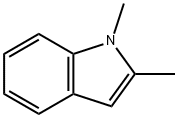
What is 1,2-Dimethylindole?
Chemical properties
off-white powder or crystals
The Uses of 1,2-Dimethylindole
Building block for preparation of 3-functionalized indoles Building block for preparation carbazoles Building block for preparation of cyanoindoles Reactant for preparation of trifluoromethylindoles Reactant for preparation of potent antihyperlipidemic agents Building block in iso-Nazarov or Nazarov cyclizations Reactant for preparation of GSK-3 inhibitors Building block for preparation of carboxyindoles Reactant for preparation of plant growth promoters Reactant for preparation of tryptophan derivatives.
The Uses of 1,2-Dimethylindole
- Building block for preparation of 3-functionalized indoles
- Building block for preparation carbazoles
- Building block for preparation of cyanoindoles
- Reactant for preparation of trifluoromethylindoles
- Reactant for preparation of potent antihyperlipidemic agents
- Building block in iso-Nazarov or Nazarov cyclizations
- Reactant for preparation of GSK-3? inhibitors
- Building block for preparation of carboxyindoles
- Reactant for preparation of plant growth promoters
- Reactant for preparation of tryptophan derivatives
What are the applications of Application
1,2-Dimethylindole is a versatile building block for organic syntheses
Properties of 1,2-Dimethylindole
| Melting point: | 55-58 °C (lit.) |
| Boiling point: | 143 °C / 30mmHg |
| Density | 0.99±0.1 g/cm3(Predicted) |
| Flash point: | >230 °F |
| storage temp. | Keep in dark place,Sealed in dry,Room Temperature |
| form | Liquid |
| color | White to Light yellow to Light orange |
| Stability: | Stable, but light sensitive. Incompatible with strong oxidizing agents. |
| CAS DataBase Reference | 875-79-6(CAS DataBase Reference) |
| NIST Chemistry Reference | 1H-indole, 1,2-dimethyl-(875-79-6) |
Safety information for 1,2-Dimethylindole
| Signal word | Warning |
| Pictogram(s) |
 Exclamation Mark Irritant GHS07 |
| GHS Hazard Statements |
H302:Acute toxicity,oral H315:Skin corrosion/irritation H319:Serious eye damage/eye irritation H335:Specific target organ toxicity, single exposure;Respiratory tract irritation |
| Precautionary Statement Codes |
P261:Avoid breathing dust/fume/gas/mist/vapours/spray. P305+P351+P338:IF IN EYES: Rinse cautiously with water for several minutes. Remove contact lenses, if present and easy to do. Continuerinsing. |
Computed Descriptors for 1,2-Dimethylindole
New Products
Tert-butyl bis(2-chloroethyl)carbamate 4-Methylphenylacetic acid N-Boc-D-alaninol N-BOC-D/L-ALANINOL N-octanoyl benzotriazole 3-Morpholino-1-(4-nitrophenyl)-5,6-dihydropyridin- 2(1H)-one Furan-2,5-Dicarboxylic Acid DIETHYL AMINOMALONATE HYDROCHLORIDE 1,1’-CARBONYLDIIMIDAZOLE R-2-BENZYLOXY PROPIONIC ACID 1,1’-CARBONYLDI (1,2-4 TRIAZOLE) N-METHYL INDAZOLE-3-CARBOXYLIC ACID (2-Hydroxyphenyl)acetonitrile 4-Bromopyrazole 5-BROMO-2CYANO PYRIDINE 5,6-Dimethoxyindanone 5-broMo-2-chloro-N-cyclopentylpyriMidin-4-aMine 2-(Cyanocyclohexyl)acetic acid 4-methoxy-3,5-dinitropyridine 1-(4-(aminomethyl)benzyl)urea hydrochloride 2-aminopropyl benzoate hydrochloride diethyl 2-(2-((tertbutoxycarbonyl)amino) ethyl)malonate tert-butyl 4- (ureidomethyl)benzylcarbamate Ethyl-2-chloro((4-methoxyphenyl)hydrazono)acetateRelated products of tetrahydrofuran
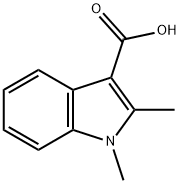
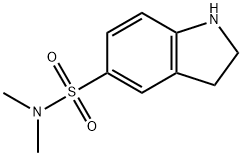
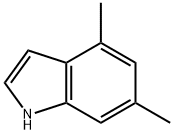

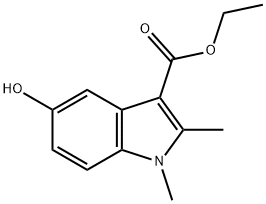

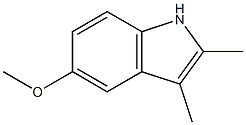
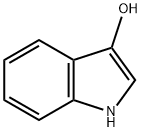
You may like
-
 1,2-Dimethylindole CAS 875-79-6View Details
1,2-Dimethylindole CAS 875-79-6View Details
875-79-6 -
 1,2-Dimethylindole CASView Details
1,2-Dimethylindole CASView Details -
 1,2-Dimethylindole CAS 875-79-6View Details
1,2-Dimethylindole CAS 875-79-6View Details
875-79-6 -
 1975-50-4 98%View Details
1975-50-4 98%View Details
1975-50-4 -
 2-HYDROXY BENZYL ALCOHOL 98%View Details
2-HYDROXY BENZYL ALCOHOL 98%View Details
90-01-7 -
 14714-50-2 (2-Hydroxyphenyl)acetonitrile 98+View Details
14714-50-2 (2-Hydroxyphenyl)acetonitrile 98+View Details
14714-50-2 -
 118753-70-1 98+View Details
118753-70-1 98+View Details
118753-70-1 -
 733039-20-8 5-broMo-2-chloro-N-cyclopentylpyriMidin-4-aMine 98+View Details
733039-20-8 5-broMo-2-chloro-N-cyclopentylpyriMidin-4-aMine 98+View Details
733039-20-8
Statement: All products displayed on this website are only used for non medical purposes such as industrial applications or scientific research, and cannot be used for clinical diagnosis or treatment of humans or animals. They are not medicinal or edible.